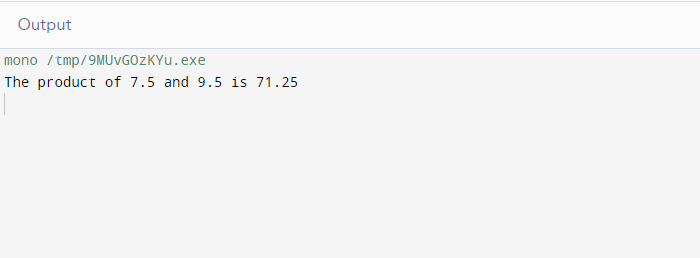What is the Difference Between int and double in C#?
The primary difference between the two data types is the way they store and represent decimal values. Integers (int) are whole numbers, meaning they have no decimal points. They are used to storing values that do not require decimal precision, such as counting, indexing, and simple arithmetic operations. Integers in C# can range from -2,147,483,648 to 2,147,483,647, which is the maximum value an ‘int’ data type can hold.
On the other hand, doubles (double) are floating-point numbers, which means they can represent decimal values. They are used to storing values that require decimal precision, such as calculations involving fractions or decimals. Doubles in C# can range from -1.7976931348623157E+308 to 1.7976931348623157E+308, which is the maximum value a ‘double’ data type can hold.
Let’s take a look at an example of each data type:
Example for int Data Type in C#
The int data type is 4 bytes in C#, below is the code that performs simple addition using the int data type:
class Program
{
static void Main(string[] args)
{
int num1 = 5;
int num2 = 10;
int sum = num1 + num2;
Console.WriteLine("The sum of {0} and {1} is {2}", num1, num2, sum);
}
}
In this example, we declare two variables ‘num1’ and ‘num2’ as integers and assign them the values 5 and 10, respectively. Then, we add them all together and put the result in a variable called “sum” and lastly, we use the Console.WriteLine method to print the outcome.
Example for double Data Type in C#
The double data type is 8 bytes in C#, below is the code that performs simple addition using the double data type:
class Program
{
static void Main(string[] args)
{
double num1 = 7.5;
double num2 = 9.5;
double product = num1 * num2;
Console.WriteLine("The product of {0} and {1} is {2}", num1, num2, product);
}
}
In this example, we declare two variables ‘num1’ and ‘num2’ as doubles and assign them the values 7.5 and 9.5, respectively. We then multiply them together and store the result in a variable ‘product’ and next we print out the result using the ‘Console.WriteLine’ method.
Note: The amount of memory that each data type can retain differs between the float and double data types; float can hold 4 bytes while double can hold 8 bytes.
Conclusion
Understanding the difference between ‘int’ and ‘double’ in C# is essential for writing effective code. While integers are used for whole numbers, doubles are used for working with floating numbers, and each has its own specific use cases. By using the appropriate data type for a given scenario, programmers can ensure that their code is accurate and efficient.


